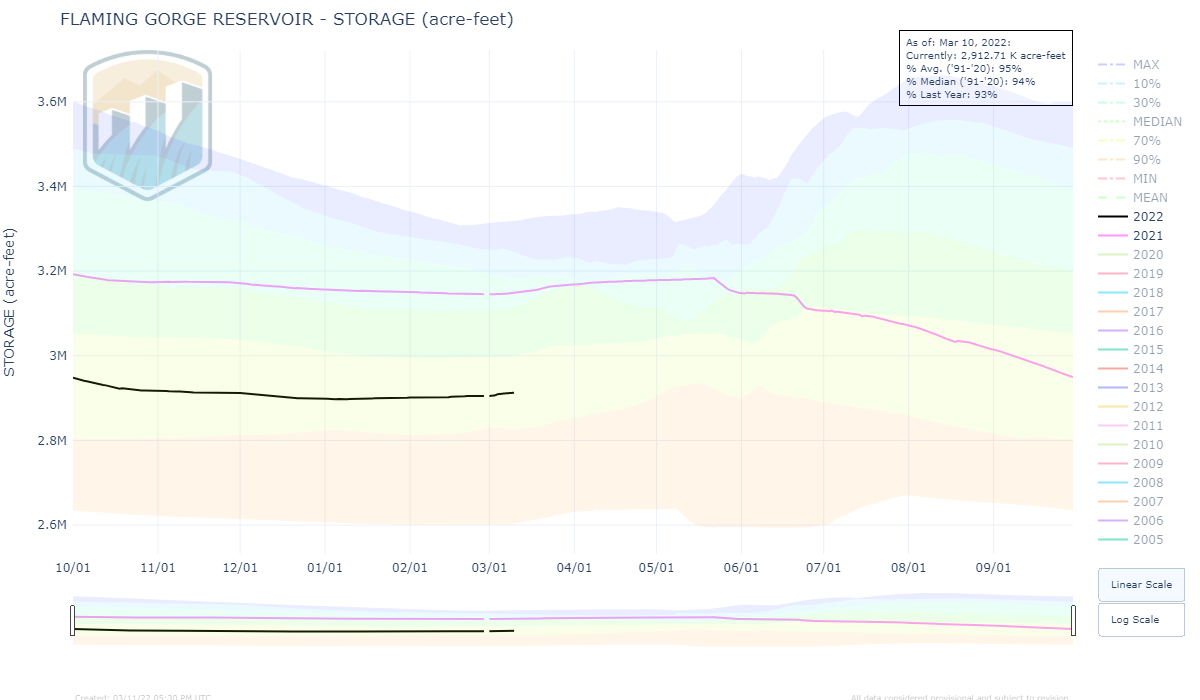Flaming Gorge
Flaming Gorge Dam is a concrete thin-arch dam on the Green River, a major tributary of the Colorado River, in northern Utah in the United States. Flaming Gorge Dam forms the Flaming Gorge Reservoir, which extends 91 miles (146 km) into southern Wyoming, submerging four distinct gorges of the Green River. The dam is a major component of the Colorado River Storage Project, which stores and distributes upper Colorado River Basin water.
The dam takes its name from a nearby section of the Green River canyon, named by John Wesley Powell in 1869. It was built by the U.S. Bureau of Reclamation between 1958 and 1964. The dam is 502 feet (153 m) high and 1,285 feet (392 m) long, and its reservoir has a capacity of more than 3.7 million acre feet (4.6 km3), or about twice the annual flow of the upper Green. Operated to provide long-term storage for downstream water-rights commitments, the dam is also a major source of hydroelectricity and is the main flood-control facility for the Green River system.
Contrary to its namesake, Flaming Gorge, the dam actually lies in steep, rapidstrewn Red Canyon in northeastern Utah, close to where the Green River cuts through the Uinta Mountains. The canyon, for which the dam is named, is buried under the reservoir almost 20 miles (32 km) upstream. Red Canyon is the narrowest and deepest of the four on the Green in the area (Horseshoe, Kingfisher, Red and Flaming Gorge) which made it the best site for the building of a dam. Flaming Gorge, on the other hand, was named by John Wesley Powell on his 1869 expedition down the Green and Colorado rivers for the "brilliant, flaming red of its rocks [when the sun shone upon them]."
Flaming Gorge Dam is one of six that make up the Colorado River Storage Project (CRSP), a massive system of reservoirs created in the upper Colorado River Basin by the Bureau of Reclamation from the 1950s to the 1970s. The project itself was the indirect result of a system of agreements signed by the seven U.S. states and two Mexican provinces in the early 20th century dividing the flow of the Colorado River among them. Among the terms stated in the 1922 Colorado River Compact reserved 7.5 million acre feet (9.3 km3) for the Upper Basin states of Wyoming, Colorado, Utah and New Mexico and an equal amount for the Lower Basin states of Arizona, Nevada and California. Due to the Colorado's high year-to-year variations in flow, the upper basin could not fulfill the lower basin's allotments in dry years, and much water was wasted during wet years because of the lack of a means to impound it. (Source: Wikipedia)
Click the image above for year-to-year storage comparisons


